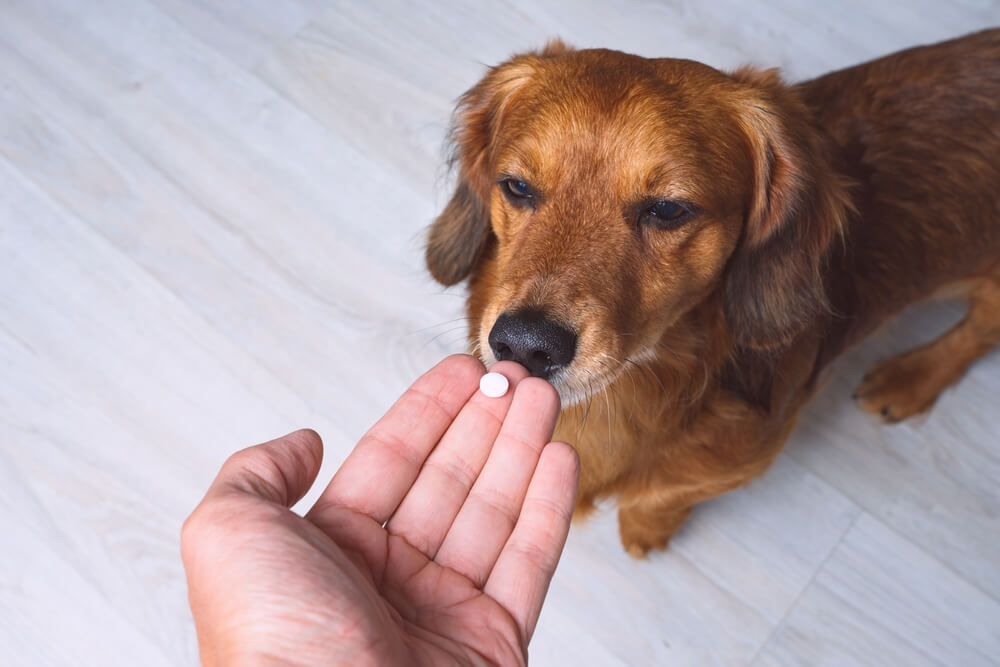Cephalexin is a commonly prescribed antibiotic for dogs, effective against various bacterial infections. This guide offers essential information on its uses, dosage, and potential side effects.
Understanding Cephalexin and Its Importance in Veterinary Medicine
Cephalexin, a widely used antibiotic in veterinary medicine, plays a crucial role in treating bacterial infections in dogs. As a member of the cephalosporin class of antibiotics, cephalexin works by interfering with the formation of bacterial cell walls, ultimately leading to the destruction of the bacteria. This makes it an effective treatment option for various infections including skin infections, urinary tract infections, and respiratory infections.
Understanding the appropriate cephalexin dosage for dogs is essential for ensuring its effectiveness while minimizing potential side effects. The dosage can vary based on factors such as the dog’s weight, age, and severity of the infection. Typically, veterinarians prescribe cephalexin at a dosage range of 10-15 mg per pound of body weight administered every 8 to 12 hours. However, it is important to follow your veterinarian’s specific instructions regarding dosage and duration.
The uses of cephalexin in dogs extend beyond just treating common bacterial infections. It is often employed as a preventative measure post-surgery to ward off potential infections due to its broad-spectrum antibacterial properties. Moreover, its efficacy against both Gram-positive and Gram-negative bacteria makes it a versatile choice among veterinary antibiotics.
The importance of cephalexin in veterinary medicine cannot be overstated. Its ability to effectively combat various bacterial infections ensures that our canine companions can recover swiftly and maintain their health. Always consult with your veterinarian before starting any new medication regimen for your pet to ensure safety and efficacy.
Common Uses of Cephalexin in Dogs

Cephalexin is a widely used antibiotic in veterinary medicine, particularly for treating infections in dogs. This broad-spectrum antibiotic falls under the cephalosporin class and is effective against a variety of bacterial infections. One of the most common uses of cephalexin in dogs is for treating skin infections, such as pyoderma. These skin conditions often arise due to bacteria entering through small cuts or abrasions, leading to inflammation and discomfort.
Another prevalent application of cephalexin is in the treatment of urinary tract infections (UTIs). Dogs suffering from UTIs may exhibit symptoms like frequent urination, blood in the urine, or straining while urinating. Cephalexin works by targeting and eliminating the bacteria responsible for these infections.
Additionally, cephalexin is frequently prescribed for respiratory tract infections. Conditions such as bronchitis or pneumonia can be effectively managed with this antibiotic, helping to alleviate symptoms like coughing and difficulty breathing.
Common treatments with cephalexin include addressing skin infections, urinary tract infections, and respiratory tract issues. By understanding the various uses of cephalexin in dogs, pet owners can better appreciate its role in maintaining their pets’ health and well-being. Always consult with a veterinarian before starting any new medication regimen for your dog to ensure proper dosage and effectiveness.
Determining the Correct Dosage of Cephalexin for Your Dog
When it comes to administering cephalexin to your pet, understanding the correct dosage is crucial for ensuring their safety and health. Cephalexin is an antibiotic commonly prescribed to treat bacterial infections in dogs, but like any medication, it must be given in the appropriate amount.
The cephalexin dosage for dogs by weight typically ranges from 10 to 15 mg per pound of body weight, administered every 8 to 12 hours. For instance, a dog weighing 20 pounds would require a dose between 200 mg and 300 mg. However, it’s essential to consult your veterinarian before starting any treatment, as they will provide the precise dosage based on your dog’s specific condition and medical history.
Administering cephalexin correctly ensures that your pet receives its full benefits without risking an overdose or underdose. Always follow the vet’s instructions closely and complete the entire course of antibiotics even if your dog appears to be feeling better. This practice helps prevent antibiotic resistance and ensures that the infection is fully eradicated.
Determining the safe dosage of cephalexin for canines involves careful consideration of their weight and health status. By working closely with your veterinarian, you can effectively manage your dog’s bacterial infections with this potent antibiotic while safeguarding their well-being.
Potential Side Effects and Risks Associated with Cephalexin Use in Dogs
Cephalexin is a commonly prescribed antibiotic for dogs, used to treat a variety of bacterial infections. While it is generally safe and effective, it is important for pet owners to be aware of the potential side effects and risks associated with its use.
One of the primary side effects of cephalexin in dogs is gastrointestinal upset. This can manifest as vomiting, diarrhea, or decreased appetite. In some cases, these symptoms may be mild and resolve on their own; however, if they persist or worsen, it is crucial to consult your veterinarian.
Another concern with the use of cephalexin and other canine antibiotics is the risk of allergic reactions. Signs of an allergic reaction can include itching, hives, swelling around the face or paws, and difficulty breathing. If any of these symptoms occur after administering cephalexin to your dog, seek veterinary care immediately.
Additionally, prolonged use or misuse of antibiotics can lead to antibiotic resistance. This means that bacteria can become resistant to treatment over time, making future infections harder to treat. It’s essential to follow your veterinarian’s dosage instructions precisely and complete the full course of medication even if your dog appears to be feeling better.
In rare cases, more severe adverse reactions to veterinary drugs like cephalexin may occur. These could include liver or kidney damage indicated by symptoms such as jaundice (yellowing of the skin or eyes), increased thirst and urination, lethargy, or changes in behavior.
Understanding these potential side effects and risks associated with cephalexin use in dogs helps ensure that pet owners can make informed decisions about their pet’s health care while minimizing any adverse outcomes. Always consult with a veterinarian before starting any new medication regimen for your pet.
Tips and Advice on Caring for Your Dog During Antibiotic Treatment
Administering antibiotics to your dog can be a crucial part of their recovery from an infection. However, it’s essential to follow the right steps to ensure the medication is effective and your pet remains comfortable throughout the treatment. Here are some informative tips for caring for a dog on antibiotics:
1. Follow Dosage Instructions: Always adhere to the veterinarian’s dosage instructions. Administering too much or too little can affect the efficacy of the treatment and could potentially harm your dog.
2. Monitor Your Dog on Medication: Keep a close eye on your dog’s behavior and health while they are on antibiotics. Look out for any side effects such as vomiting, diarrhea, or loss of appetite, and report these to your vet immediately.
3. Tips for Administering Pet Medication Effectively: If you find it challenging to give pills directly, consider hiding them in a small amount of food or using pill pockets designed specifically for pets. Ensure that they consume the entire dose.
4. Maintain Hydration: Antibiotics can sometimes lead to dehydration, so make sure your dog has access to fresh water at all times.
5. Complete the Full Course: Even if your dog appears better before finishing their prescribed course of antibiotics, it’s crucial to complete it entirely unless advised otherwise by your vet. Stopping early can lead to antibiotic resistance or recurrence of infection.
By following these guidelines and maintaining regular communication with your veterinarian, you can help ensure that caring for a dog on antibiotics is as smooth and effective as possible.
The Importance of Consulting Your Veterinarian Before Starting Cephalexin Treatment
When it comes to administering antibiotics like Cephalexin to your pets, consulting your veterinarian is crucial. Antibiotics play an essential role in treating bacterial infections, but improper use can lead to resistance and other health complications. Therefore, it’s vital to speak to your vet about antibiotics use before starting any treatment.
Veterinary consultation importance cannot be overstated. Veterinarians possess the expertise needed to diagnose the specific type of infection affecting your pet and determine whether Cephalexin is the appropriate medication. They will also provide professional guidance on dosing medications, ensuring that your pet receives the correct dosage based on their weight, age, and medical history.
By seeking a veterinary consultation before starting Cephalexin treatment, you not only safeguard your pet’s health but also contribute to the broader effort of combating antibiotic resistance. Always prioritize professional advice when it comes to medications for your furry friends.
Conclusion, Ensuring Safe and Effective Use of Cephalexin in Canine Care
Administering cephalexin to dogs requires a careful balance of proper dosage, timing, and monitoring. This antibiotic is commonly prescribed for a range of bacterial infections in canines, including skin infections, urinary tract infections, and respiratory issues. To ensure its safe and effective use, it is crucial to follow veterinary guidance meticulously.
Firstly, always adhere to the prescribed dosage and duration recommended by your veterinarian. Overdosing or underdosing can lead to ineffective treatment or potential side effects such as gastrointestinal upset or allergic reactions. It’s also important to complete the entire course of the medication even if your dog appears to be feeling better before finishing all doses.
Monitoring your dog for any adverse reactions during the course of treatment is essential. Common side effects may include vomiting, diarrhea, or loss of appetite. If any severe symptoms occur (such as difficulty breathing or swelling) seek immediate veterinary attention.
In addition to monitoring for side effects, ensure that cephalexin is stored correctly in a cool, dry place out of reach from pets and children. Proper storage helps maintain the medication’s efficacy throughout its use.
Finally, regular follow-up visits with your veterinarian will help track your dog’s progress and make any necessary adjustments to their treatment plan. By following these guidelines diligently, you can help ensure that cephalexin remains a safe and effective option in managing bacterial infections in your canine companion.






